I am ashamed to say that, before Walk the Region this year, I had never been to Montreal North. Like many Montrealers, my first impression of the borough was forged in 2008, when police shot a teenager in a park and the community erupted into violent riots. I’m willing to bet that the community’s invisibility contributed to those riots first place and unfortunately, while the 2008 incidents flashed Montreal North onto Montrealers’ spotlight, they also blinded us to any more comprehensive understanding of this part of the city.
Behind it’s reputation, Montreal North remains largely invisible. I know that what I found when we crossed north of Blvd Industrielle and into the land of 5-digit addresses, was not what I expected.
For one thing, I was not expecting quaint single-family houses with peaked roofs on quiet streets lined with majestic trees. Nor was I expecting this new development of town-house-style condominiums. We were fortunate that Spacing Montreal collaborator Jean Desjardins grew up in one such home, and he became our guide through his childhood neighbourhood. He introduced us to his mother, who told us a bit about how the neighbourhood had evolved in the past 2 or 3 decades: namely that there were now sidewalks everywhere, and that the gas stations had closed. The car-dealership at the corner of the street had evidently also been abandoned for several decades.
That would be well and good if there were local businesses and services on hand for residents. Rue Charleroi had a few staples – the bank and the pharmacy; the casse-croûte, pizza parlour and ice-cream shop, but most of the commercial areas seemed to be along huge car-centric boulevards like Henri-Bourrassa and Pie-IX, surrounded by a sea of parking.
Heading east, we did find apartment blocks that fit my pre-conceived notions of Montreal North (This music video actually provides a great glimpse into the nieghbourhood). But big beautiful trees towered over the low apartment blocks, their foliage aglow in the setting sun. We remarked on how the trees seemed to somehow hide the poverty, and I couldn’t help wondering if it isn’t more than that: if perhaps trees can alleviate poverty, even a little.
Jean also took us to the park behind his old high school, the very park in which Fredy Villanueva was shot four years ago. It’s hard to describe how alive the park was on a Sunday evening – there must have been at least a hundred people enjoying the space. There were kids playing in the sand and on the jungle-gyms, and just as many mums chatting on benches or pushing swings. There were also dozens of teens playing tennis and basketball, riding bikes, strutting their stuff and checking eachother out.
A couple teens were not-so-covertly sipping beers behind the high school. They were very impressed when they found out that we had walked all the way from Kahnawake, they offered me a can of beer, a cigarette. I politely turned down their delinquent hospitality but stuck around to chat for a few minutes and learned that they’d both dropped out of school, a common problem in the neighbourhood.
The only sign of any potential danger in the park were the two city employees supervising the activity from a little concrete hut.
We ended up having supper in a tacky, overpriced Italian restaurant on Henri-Bourrassa (the little family-run ethnic eateries I’d been hoping to find in Montréal-Nord for were nowhere to be found) before pitching our tents in the backyard of an abandoned house. (Negotiations with RDP to camp in a park fell through at the last minute when the borough suddenly insisted that we buy a $3 million insurance, leaving us stuck for a place to crash on Sunday night).
The next morning we headed across the Pie-IX bridge to Laval, and I noticed this community garden tucked into the on-ramp.
But, as we passed an elderly gentleman walking back from the Super C in Laval with a couple frozen pizzas in his shopping cart, I was also reminded much of Montreal North remains a food desert, and that this borough is one of the most poorly-served in therms of public transit.
Fortunately, these are the kind of problems that we know how to fix.

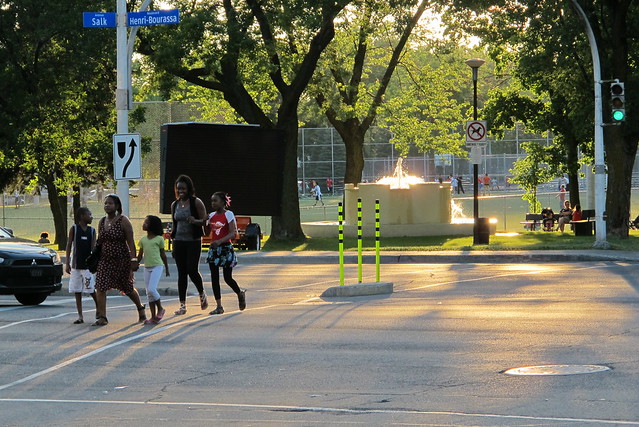
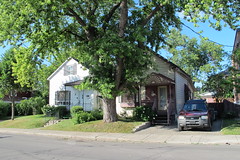
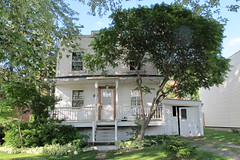
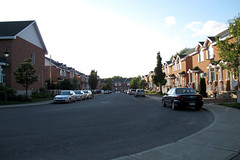
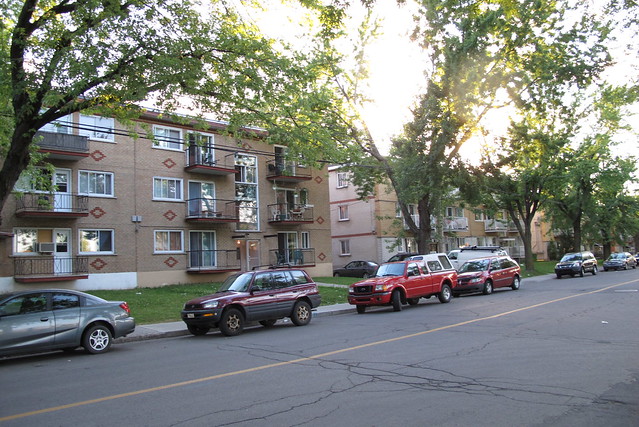
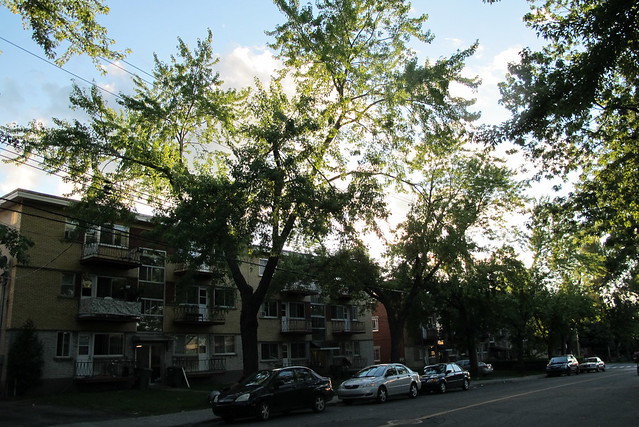
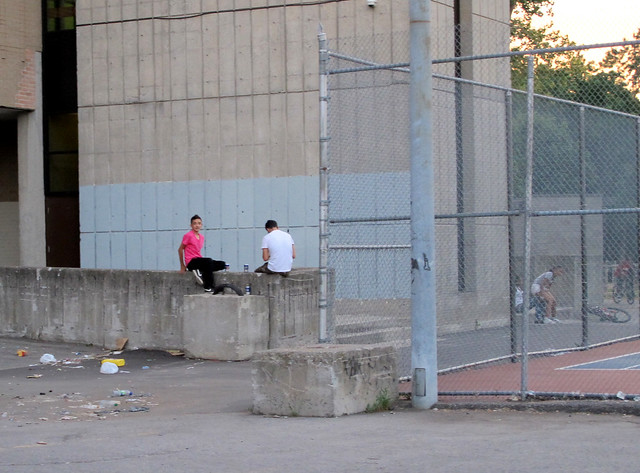

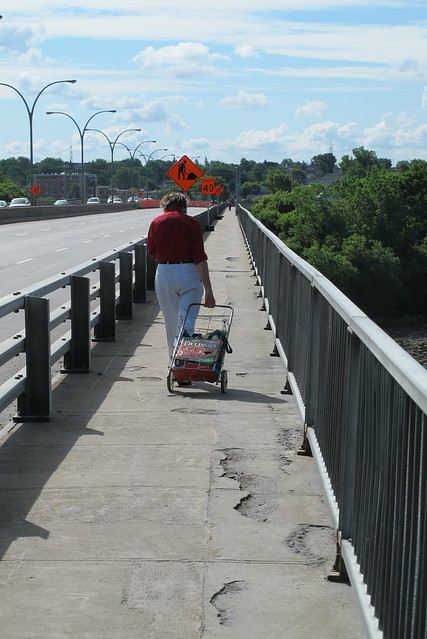
4 comments
Yes, I grew up in Tétraultville/Anjou and a lot of people from my elementary school came from Montreal-Nord and RDP. There are a couple of streets with stuff on it; Hochelaga/Beaugrand has something, and there’s always been a little village in Anjou near Chaumont. But I later realized that there aren’t that many, say, foodie restaurants in the east end.
il n’y a pas de honte (re: I’m a”ed…) à découvrir Montréal dans toute sa diversité urbaine, sociale, économique… Il y a toujours une première fois, et ensuite, on est accro ! la chanson de Dramatik est vraiment “to the point”.
J’ai été honoré de nous guider. Un petit détail qu’a infirmé ma mère: Blondin Mazda sur Gouin a été en activité jusque vers 1997. On y vendait les voitures usagées du concessionnaire dont les activités principales se trouvaient plus loin dans l’est. La poussière accumulée sur les vieux modèles entreposés dans ce bâtiment d’un autre siècle m’avait mené à un faux souvenir.
J’aurais aimé avoir le temps de vous montrer les 5 résidences du quartier appartenant au clan, dont deux outrancières sur Gouin ! Là j’ai hâte de retourner chez mes parents: ils m’ont dit que la ville a décidé d’inverser le sens de toute la rue, maintenant sens unique vers le nord pour assurer plus de sécurité aux écoles. Moi qui y ai vécu toute mon enfance jusqu’à 23 ans, des scènes très familières vont maintenant avoir l’air du jeu des 7 erreurs jusqu’à ce que mon cerveau s’adapte au nouvel état des choses.
I guess you will have to come back, because there are (a few) family-run ethnic eateries. Chez Toto (Haitian food (rice and beans, fried chicken, special soup on Saturday morning, etc) is one of the pioneers.